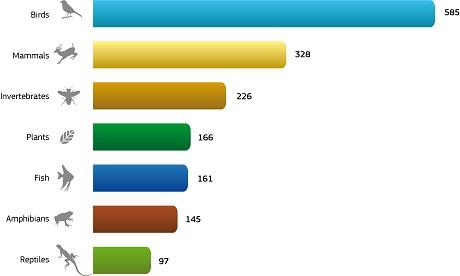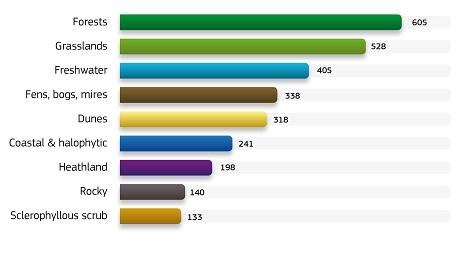
The global population of wild species has fallen by 60% in just 40 years, and roughly one million species are at risk of extinction. LIFE projects are helping to counter this decline as can be seen in our new Bringing nature back through LIFE study.
The European Commission continues to address the urgency of the problem and in May last year adopted the EU’s Biodiversity Strategy for 2030 – a core component of the European Green Deal. The Strategy is an ambitious plan for protecting nature and reversing the degradation of ecosystems.
For nearly 30 years, the LIFE programme has been helping to protect Europe’s nature. It has financed more than 1 700 projects on nature and biodiversity and is one of the main sources of EU funding for implementing the EU Birds and Habitats Directives.
Our Bringing nature back through LIFE study illustrates this success and below are some highlights.
SPECIES
Saving multiple species from being wiped out
LIFE projects have been helping to save numerous species from extinction across the EU. These include the Bearded vulture, the Imperial eagle, the Azores bullfinch, the Aquatic warbler and the Blue chaffinch. Other species brought back from the brink are the Iberian lynx, the Brown bear, the Pyrenean desman and the Mediterranean monk seal.

Protecting Europe’s threatened invertebrates
Invertebrates provide critical ecosystem services like pest control, pollination, soil creation and water filtration. But most invertebrate species are declining across Europe. This is down to factors like unsustainable forest management, agricultural intensification, land abandonment, tourism, pollution and climate change.
To-date, 76 LIFE projects have focused on the conservation of invertebrate species. However, many LIFE projects that are working to improve habitats like grasslands, forest and wetlands - although not having invertebrates as their main goal - have also helped invertebrate conservation.

A better life for multiple fish species
There are around 390 of freshwater fish species and 1 250 species of marine fish in EU waters. But numbers are deteriorating by up to 50%. The main threats to Europe’s fish fauna include pollution, overfishing, coastal development, and mining. To curb these threats, LIFE has so far invested €150 million in fish protection, focusing on 64 species of freshwater fish. Work has included restoring rivers and freshwater habitats, improving connectivity and restocking.

HABITATS
LIFE helps habitats to flourish again
LIFE projects have had, and continue having, a positive impact on various habitats across the EU. These projects have made a tremendous contribution towards the identification and designation of both the terrestrial, and in recent years, the Natura 2000 network. LIFE has also purchased tens of thousands of hectares of Europe’s most rare and endangered habitat types and restored a lot of land. Among other successes, this has seen seagrass beds and dynamic dunes, as well as their associated species recovering.

Realising the potential of our natural peatlands
Peat is an accumulation of partially decomposed vegetation and organic matter. Natural peatlands provide invaluable ecosystem services, including climate regulation as well as water filtration and supply. They are also home to several rare and threatened species. But peatlands are being degraded and they take a long time to recover from this.
To-date, the LIFE programme has funded 363 LIFE projects to protect Europe’s peatlands. Highlights over the years include restoring 170 000 hectares of mires in the United Kingdom, an area roughly twice the size of New York. LIFE projects have also helped to revive 40% of Belgium’s peatlands.

Helping Europe’s forests thrive
Forests are vital for biodiversity and a crucial part of the Natura 2000 network. However, commercial forestry is a major threat to forest habitats, followed by invasive alien species, intensive agriculture, and urban development.
More than 600 LIFE Nature projects linked to forest habitats have taken place since 1992. Key successes can be seen in the revival of rare habitats such as the Macaronesian laurel and Western taiga forests. LIFE often prevents any further damage to these habitats by adopting sustainable forest management, preventing afforestation, combating invasive alien species and planting saplings.

Want to learn more?
Don’t forget that you can find out more about how LIFE is saving Europe’s species and habitats in our Bringing nature back through LIFE study.
However, if you’re pushed for time, feel free to check out our shorter brochure on the same theme.
Details
- Publication date
- 20 January 2021
- Author
- Executive Agency for Small and Medium-sized Enterprises

